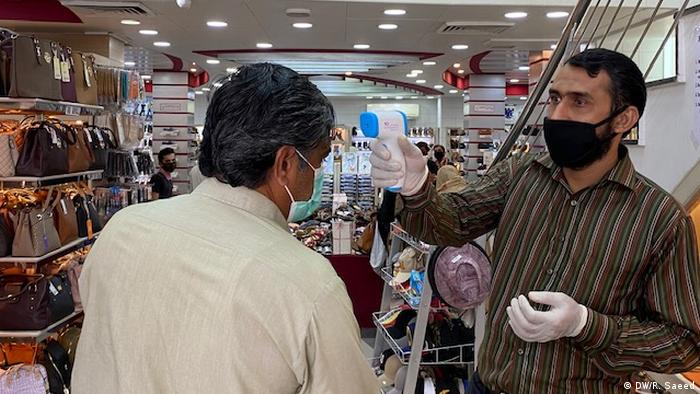ECONOMICAL CONDITION OF PAKISTAN DURING COVID 19
How the COVID-19 crisis is affecting Pakistan's economy
Pakistan's already fragile economy had only just been moving towards stability when the health crisis struck. Experts fear that the pandemic's economic fallout will considerably derail the country's recovery process.
Pakistan has so far registered nearly 270,000 cases of the coronavirus and over 5,700 related deaths. A week ago, President Arif Alvi congratulated the nation for its "victory" against COVID-19 during an interview with a local broadcaster. Alvi said the government successfully saved the country's poorest from the financial impact of the pandemic.
At the time of Alvi's commendation, the confirmed number of COVID-19 patients in Pakistan stood at 259,998 and 2,085 new cases had been recorded in the last 24 hours.
Prime Minister Imran Khan's government says the drop in the daily number of new coronavirus cases in July is due to its "smart lockdown" strategy. But observers say the trend could be a result of misreporting and inadequate testing.
The pandemic has also taken a devastating blow on the Pakistani economy.
"Pakistan's economy is shrinking, unemployment is rising and various sectors are in crisis," warned Zafar Moti, the former director of the Karachi Stock Exchange (KSE). Moti told DW he is less concerned about Pakistan's financial markets and more concerned about the long-term impact of the pandemic.
Pakistan's exports primarily comprise of textile products. These exports are down since the COVID-19 crisis started, with some orders even being canceled. Moti does not expect demand to pick up again post pandemic. "All of this will negatively impact foreign reserves and ultimately the currency value. In the long run, financial markets will also be negatively affected," he said.
When Khan took power in 2018, Pakistan's GDP growth was around 5.8%; now it is 0.98% and is likely to decline further. The country's fiscal deficit is almost 10% and revenues have plummeted in the past two years.
Pakistan's public health system was overstretched long before the onset of the coronavirus pandemic. On average, Pakistan has one doctor for every 963 people and one hospital bed for every 1,608 people, according to UNDP figures. Pakistan faces a shortage of 200,000 doctors and 1.4 million nurses to cope with the crisis.
In early 2019, in the face of a monetary crisis, Pakistan reached out to the International Monetary Fund (IMF) for a bailout package worth six billion dollars. The economy was only just recovering from the crisis when the pandemic struck.
Due to the pandemic, an additional 2.45 million people now suffer from food insecurity. One third of Pakistan's population live below the poverty line while 66% of the population — or 145 million people — living in poverty, requires immediate relief.

Comments
Post a Comment